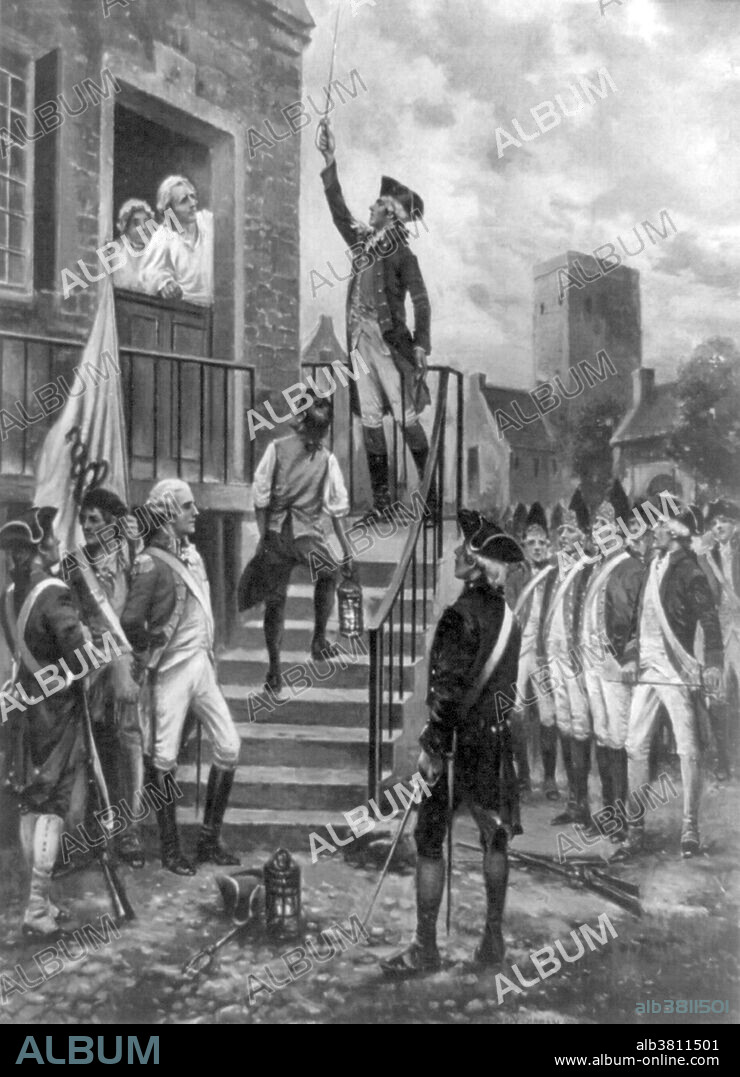alb3811501
Capture of Fort Ticonderoga, 1775

|
Add to another lightbox |
|
Add to another lightbox |



Title:
Capture of Fort Ticonderoga, 1775
Caption:
The Capture of Fort Ticonderoga occurred during the American Revolutionary War on May 10, 1775, when a small force of Green Mountain Boys led by Ethan Allen and Colonel Benedict Arnold overcame a British garrison at the fort and looted the personal belongings of the garrison. Cannons and other armaments from the fort were transported to Boston and used to fortify Dorchester Heights and break the standoff at the Siege of Boston. After seizing Ticonderoga, a small detachment captured the nearby Fort Crown Point on May 11. Seven days later, Arnold and 50 men boldly raided Fort Saint-Jean on the Richelieu River in southern Quebec, seizing military supplies, cannons, and the largest military vessel on Lake Champlain. Although the scope of this military action was relatively minor, it had significant strategic importance. It impeded communication between northern and southern units of the British Army, and gave the nascent Continental Army a staging ground for the invasion of Quebec later in 1775.
Personalities:
Credit:
Album / LOC/Science Source
Releases:
Model: No - Property: No
Rights questions?
Rights questions?
Image size:
3145 x 4350 px | 39.1 MB
Print size:
26.6 x 36.8 cm | 10.5 x 14.5 in (300 dpi)
Keywords:
1770S • 1775 • 18TH CENTURY • 18TH CENTURY, THE • 18TH • AMERICA • AMERICAN REVOLUTION • AMERICAN WAR OF INDEPENDENCE • AMERICAN • ART • ARTWORK • BW • CAPTURE OF FORT TICONDEROGA • CELEBRITY • DRAWING • EDWARD PERCY MORAN • ENGRAVING • ESSEX COUNTY • ETHAN ALLEN • EVENT • FAMOUS • FORT TICONDEROGA • GOVERNMENT • GREEN MOUNTAIN BOYS • HISTORIC • HISTORICAL • HISTORY • HUNDRED YEARS WAR • ILLUSTRATION • IMPORTANT • MAY 10 • MAY 10TH • MILITARY • MILITIA • NEW YORK • NOTABLE • PATRIOT • PERCY MORAN • POLITICAL • POLITICS • REVOLUTIONARY WAR • SOLDIERS • TICONDEROGA • UNITED STATES • US • USA • WAR OF INDEPENDENCE • WAR • WARFARE • WELL-KNOWN
 Pinterest
Pinterest Twitter
Twitter Facebook
Facebook Copy link
Copy link Email
Email

